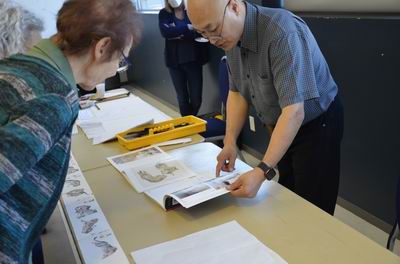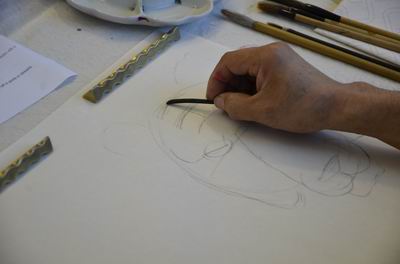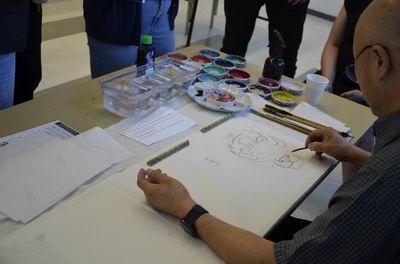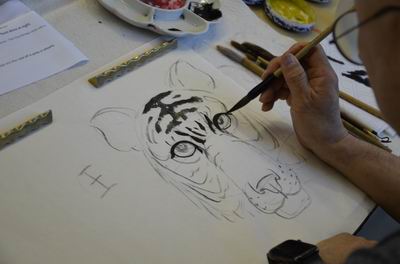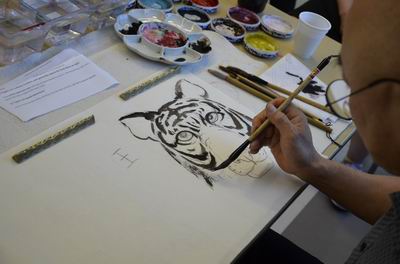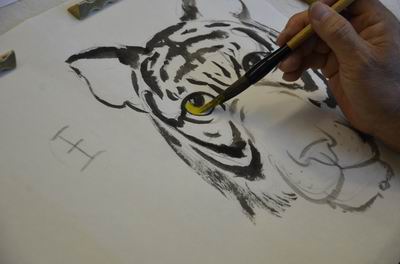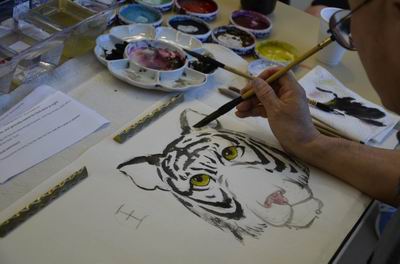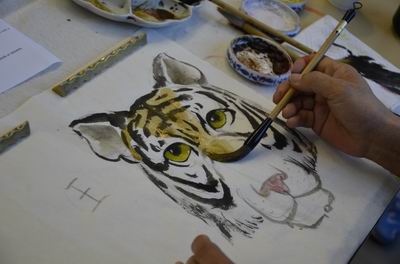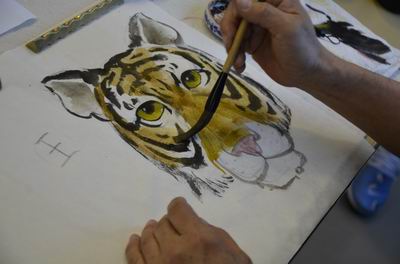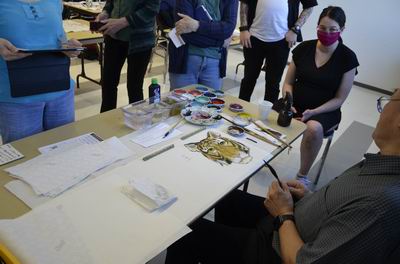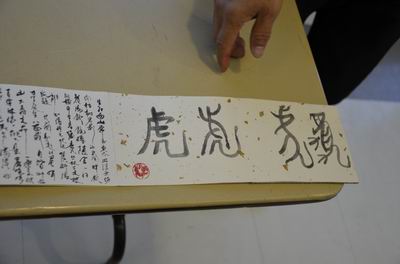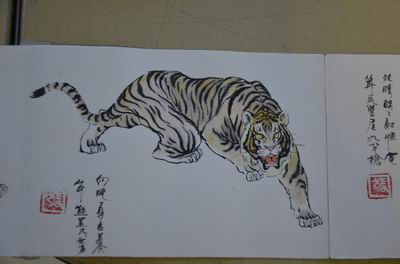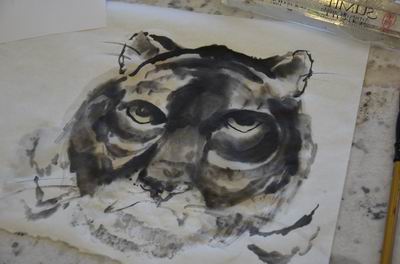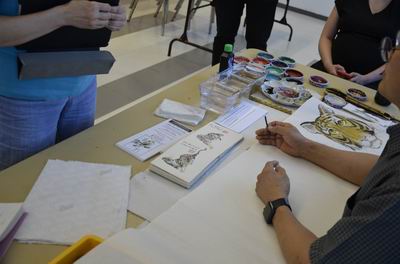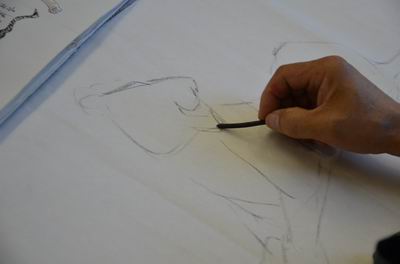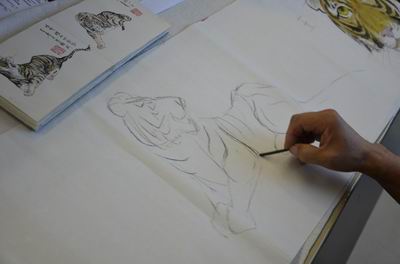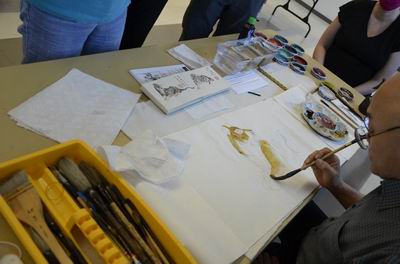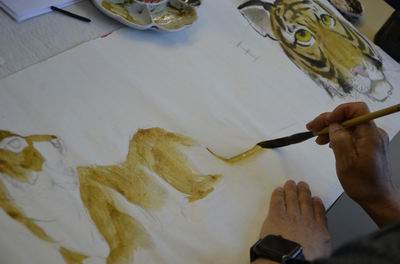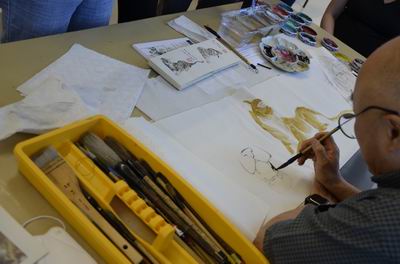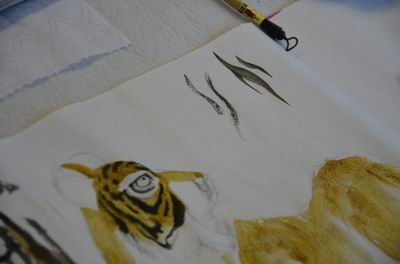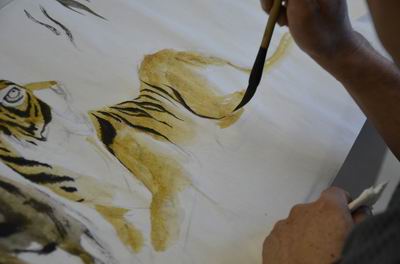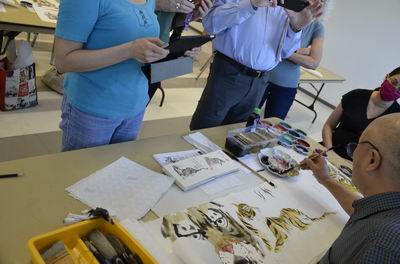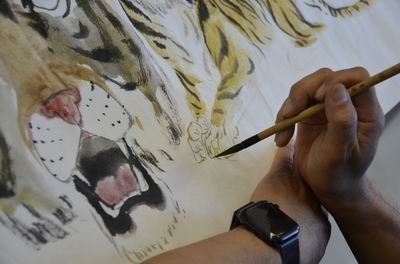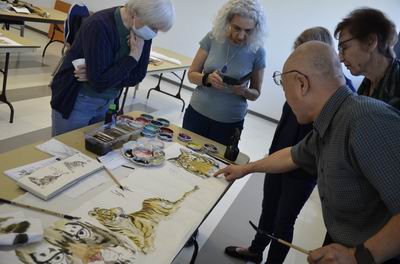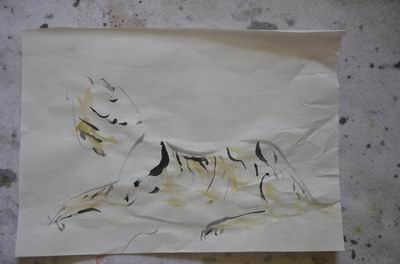Tigers with Baoxing Zhang - June 11th, 2022
The ferocious, unpredictable and wild tiger fascinates us as much as the tiger frightens us. Baoxing Zhang began his workshop by showing with examples how often the tiger is painted and the variations of how artists present the tiger.
Sketching your painting with charcoal is a good way to start. The head of the tiger is where Baoxing Zhang began.
Take your time to develop the proportions of the head and outline the stripes.
Then add the sumi-e ink for the features including the stripes.
Make the stripes with a large brush in one stroke.
The eye of the tiger is yellow.
The ear of the tiger is small and the inner ear fur can be drawn in with a large brush with a grey tone of ink.
Using a large brush with yellow and a touch of orange, Baoxing Zhang painted the colour of the tiger over the stripes.
Continue colouring the tiger head though leave the fur around the mouth unpainted.
Our turn to paint the tiger head was the next step.
On the right, the calligraphy for the tiger in ancient writing is close to the painting of a tiger. The calligraphy on the left is the tiger in modern writing.
Baoxing Zhang provided examples of the tiger which he has painted many times.
This artist captured the menacing threat of the tiger.
Baoxing Zhang returned to paint the body of the tiger. This time he would paint the body colour first and then add the stripes.
Begin by sketching the body proportions in charcoal.
Sketch some stripes too. The stripes are not too regular. The stripes should vary in size and form.
Add the body colour with a large brush.
The tail is painted with one stroke.
The mouth requires understanding the shape and proportions of the fangs and jaw.
Baoxing Zhang demonstrated the stripes separately. Begin with a point and press the brush to create a broader section near the centre of the stripe.
Add the stripes over the body in single strokes. The stripes should be varied in size and form.
Leave the tiger's chest unpainted with colour but add some stripes.
Don't forget the claws which you can paint with a smaller fine brush.
Time for the artists to paint the tiger body though with some tips from Baoxing Zhang.
This artist started to capture the tiger body proportions and the stripes.
You can learn more about Baoxing Zhang in the links section.
